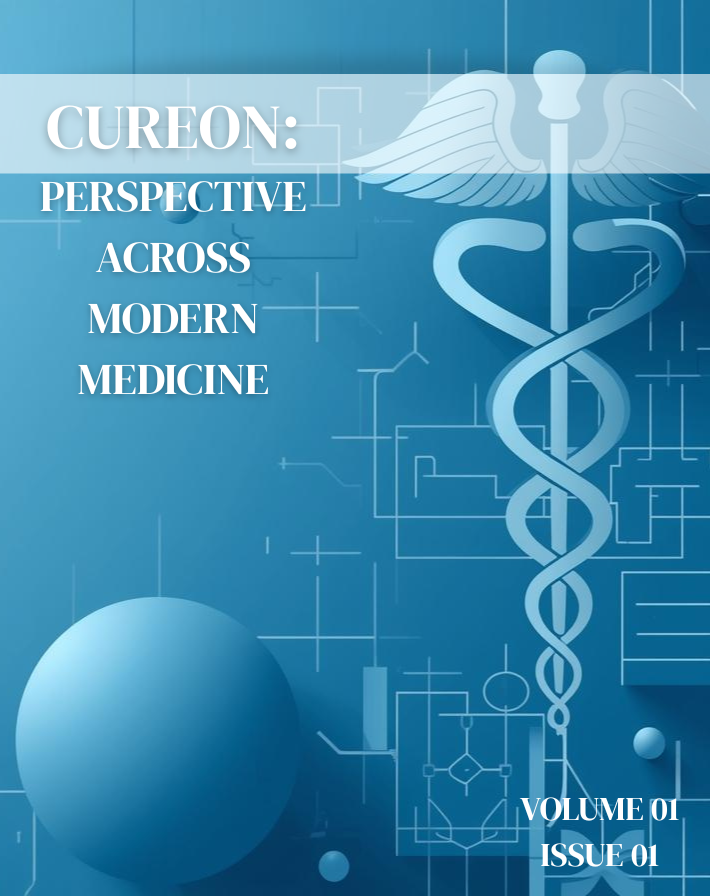Impact of Maternal Employment Status on Stress Levels of University Students: A Cross-Sectional Comparative Study in Karachi
Keywords:
maternal employment, student stress, perceived stress scale, university studentsAbstract
Objective:
This study aimed to compare stress levels among university students with employed versus unemployed mothers, and to determine whether maternal employment status influences perceived stress.
Methods:
A comparative cross-sectional study was conducted among 100 undergraduate students in Karachi. Fifty participants had employed mothers and fifty had unemployed mothers. The Perceived Stress Scale (PSS-10) was administered. Descriptive statistics summarized demographic data, and independent t-tests compared mean stress scores between groups. A significance level of p<0.05 was adopted.
Result:
The mean stress score of students with employed mothers was slightly higher than that of students with unemployed mothers. However, the difference was not statistically significant (p>0.05). Female students demonstrated higher mean stress scores than males across both groups. Stress was more pronounced among students aged 20–25 years.
Conclusion:
The study found no significant difference in stress levels between students of employed and unemployed mothers, although female students reported higher stress overall. These findings suggest that maternal employment status does not directly determine student stress levels, but gender and age may play a role. Future interventions should focus on stress management support tailored to student demographics.
Downloads
References
1. Misra R, Castillo LG. Academic stress among college students: comparison of American and international students. Int J Stress Manag. 2004;11(2):132–48.
2. Bayram N, Bilgel N. The prevalence and socio-demographic correlations of depression, anxiety and stress among a group of university students. Soc Psychiatry Psychiatr Epidemiol. 2008;43(8):667–72.
3. Khan M, Mahmood S, Badshah A, Ali SU, Jamal Y. Prevalence of depression, anxiety and their associated factors among medical students in Karachi, Pakistan. J Pak Med Assoc. 2006;56(12):583–6.
4. Hoffman LW, Nye FI. Working mothers: an evaluative review of the consequences for children. Child Dev. 1974;45(1):1–41.
5. Vandell DL, Ramanan J. Effects of early and recent maternal employment on children from low-income families. Child Dev. 1992;63(4):938–49.
6. Desai S, Jain D. Maternal employment and changes in family dynamics: a study from India. J Fam Issues. 1994;15(4):564–78.
7. Gupta N, Sharma A. Maternal employment and student stress: an Indian perspective. Asian J Psychiatr. 2018;36:10–5.
8. Nair R, Sebastian D. Gender roles and maternal employment in South Asia. Soc Sci Rev. 2017;33(2):45–56.
9. Parcel TL, Menaghan EG. Maternal working conditions and children’s verbal facility: studying the intergenerational transmission of inequality from mothers to young children. Soc Psychol Q. 1994;57(2):132–47.
10. Bianchi SM. Maternal employment and time with children: dramatic change or surprising continuity? Demography. 2000;37(4):401–14.
11. Sultana A, Hossain S. Maternal employment and stress in students: evidence from Bangladesh. Bangladesh J Psychol. 2015;22(2):45–56.
12. Rahman S, Ali S. Employment of mothers and adolescent stress: a comparative study in Dhaka. Int J Adolesc Youth. 2016;21(1):85–95.
13. Qadir F, Khan R, Medhin G, Prince M. Male gender preference, female gender disadvantage as risk factors for psychological morbidity in Pakistani women of childbearing age – a life course perspective. BMC Public Health. 2011;11:745.
14. Cohen S, Kamarck T, Mermelstein R. A global measure of perceived stress. J Health Soc Behav. 1983;24(4):385–96.
15. Roberti JW, Harrington LN, Storch EA. Further psychometric support for the 10-item version of the Perceived Stress Scale. J Coll Couns. 2006;9(2):135–47.
16. Alam MT, Shah FA. Stress among university students in Bangladesh: a comparative study. South Asian J Psychol. 2015;2(1):34–42.
17. Devi P, Rajendran R. Maternal employment and psychological well-being of adolescents. Indian J Psychol Med. 2012;34(2):169–73.
18. Dyson R, Renk K. Freshmen adaptation to university life: depressive symptoms, stress, and coping. J Clin Psychol. 2006;62(10):1231–44.
19. Bayani AA, Ganji P, Asghari A. Gender differences in perceived stress and coping strategies among Iranian university students. Int J Psychol Stud. 2010;2(2):70–6.
20. Matud MP. Gender differences in stress and coping styles. Pers Individ Dif. 2004;37(7):1401–15.
21. Mirza I, Jenkins R. Risk factors, prevalence, and treatment of anxiety and depressive disorders in Pakistan: systematic review. BMJ. 2004;328:794.
22. Jadoon NA, Yaqoob R, Raza A, Shehzad MA, Choudhry ZS. Anxiety and depression among medical students: a cross-sectional survey. Pak J Med Sci. 2010;26(4):878–81.
23. Abouserie R. Sources and levels of stress in relation to locus of control and self-esteem in university students. Educ Psychol. 1994;14(3):323–30.
24. Abdulghani HM, AlKanhal AA, Mahmoud ES, Ponnamperuma GG, Alfaris EA. Stress and its effects on medical students: a cross-sectional study at a Saudi university. Saudi Med J. 2011;32(12):1217–21.
25. Elias H, Ping WS, Abdullah MC. Stress and academic achievement among undergraduate students in Malaysia. Procedia Soc Behav Sci. 2011;29:646–55.
26. Al-Dubai SAR, Al-Naggar RA, Alshagga MA, Rampal KG. Stress and coping strategies of students in a medical faculty in Malaysia. Malays J Med Sci. 2011;18(3):57–64.
27. Beiter R, Nash R, McCrady M, et al. The prevalence and correlates of depression, anxiety, and stress in a sample of college students. J Affect Disord. 2015;173:90–6.
Additional Files
Published
Issue
Section
License
Copyright (c) 2025 Cureon: Perspective Across Modern Medicine

This work is licensed under a Creative Commons Attribution 4.0 International License.



